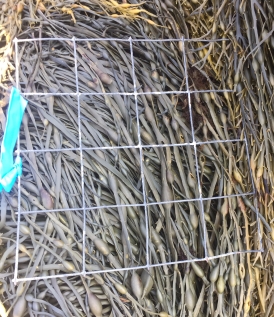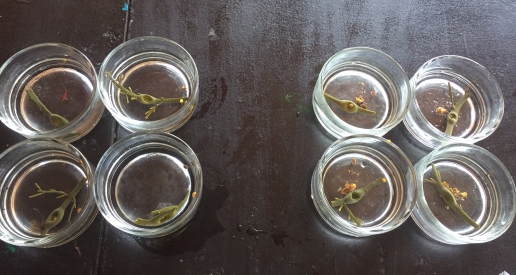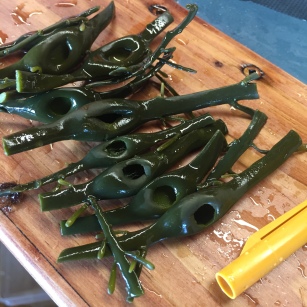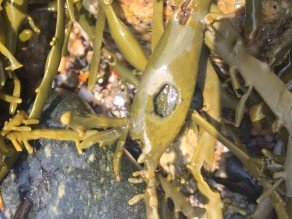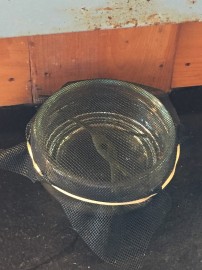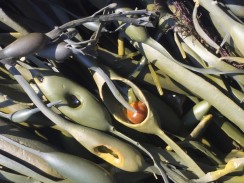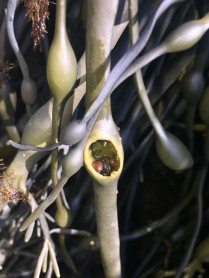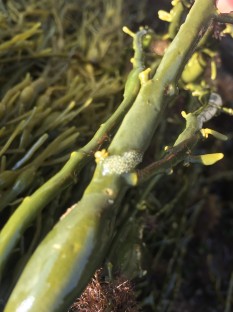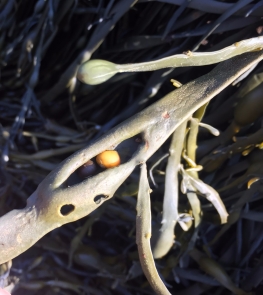During my transect survey out at Smith’s Cove, I only found small juvenile flat periwinkles, the large majority of which are <2 mm in shell height, inside broken rockweed air bladders. Juvenile flat periwinkles are smaller than 11 mm1 and they get bigger as they age. Therefore, the snails I found inside the air bladders were recently-hatched!
Additionally, I saw many more snails inside air bladders on the surface layers of the rockweed than the deeper layers. The surface layers, especially when it is sunny, are much more dry than the deeper layers because the surface layers are more exposed to the sun. In other words, the risk of desiccation for a snail on the surface layers is much higher. So in the natural environment, more snails are found inside air bladders where desiccation risk is high.
In my laboratory experiments, I found that the periwinkles leave the broken air bladders much less when the environment is dry and when there is a predation risk.
In summary, recently-hatched flat periwinkles use broken air bladders to avoid desiccation and predation.
These results are really exciting because it tells us that broken rockweed air bladders are in fact a juvenile habitat and are important in survival for the newly-hatched flat periwinkles. Rockweed is commercially harvested, and gaining this information can guide management to not threaten the snails.
Throughout the course of this study, I’ve learned a lot about research and the scientific process. One lesson that I learned is that research requires a lot of planning, but even with planning, things don’t always go as planned. For example, I did some transect surveys when it was cloudy and I wanted to use agar pieces to measure desiccation rates during the same weather. However, after I did those transect surveys, I couldn’t prepare the agar in time for the next cloudy day and it didn’t get cloudy again after that. In the end, I had to simulate cloudy weather using an umbrella. I learned that there are many things I cannot control for, such as weather, and that is completely fine as long as I properly explain and account for them.
Before taking Research in Biology, I never imagined I would spend so much time studying snails. But what I learned goes beyond topics related to the flat periwinkle; I gained invaluable skills that I will carry with me to whatever the future brings.
Thank you for following me through this journey!

